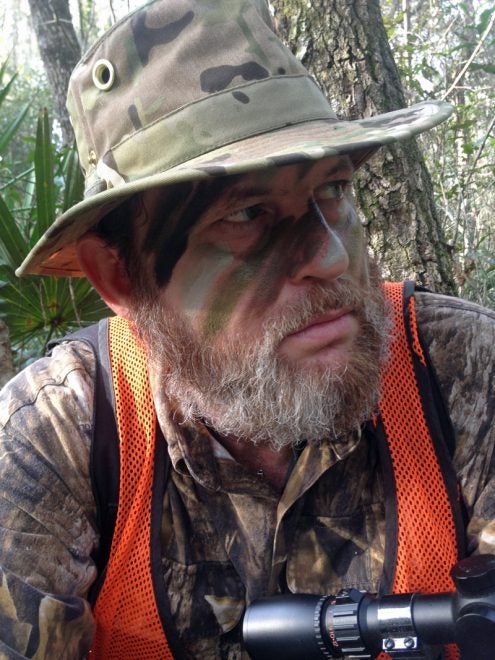How Important is Camouflage for Hunting?
Russ Chastain 03.19.20

Perhaps the least-necessary part of any hunter’s gear is camouflage clothing. Yes, it’s true that I usually reach for camo clothing when I head out to pursue wild game, but while it helps in many situations, it’s not strictly necessary.
Consider that most of the time, deer hunters are required by law to wear bright orange vests to prevent them being shot by other hunters… but they still kill deer with those vests on. So if your freezer gets low on meat during the COVID-19 coronavirus emergency, don’t feel like you need to buy a lot of gear before you go hunting for survival.
Don’t Move!
What’s more important than camo? Being still. You can blend while wearing just about any drab-colored clothing, as long as you just stand or sit still. And I’ll happily admit that I have trouble doing that… but I know it makes a big difference. I can be wearing all the camouflage in the world, but if I can’t be still I will be spotted by my prey.
Sometimes you have to move, of course, but learning to make those movements in slow motion can help you get away with a lot, even when deer are nearby. So keep your movement to a minimum and move slooooowly when you do move.
“Blinding” the Game Animals
To remain hidden from view, the best thing you can do is to hide behind something. It may be a screen of brush, a wall of palmetto fronds, or a manmade “blind” of some sort. Pretty much anything to conceal your movements from the critters.
It’s best to have these blinds in place for some time prior to your actual hunt, to allow animals to get used to seeing them. A new blob of color or reasonably large object on the landscape will usually be noticed and studied hard by prey animals the first time they see them, and it’s to a hunter’s advantage for the animals to already have seen (and become accustomed to) it before the hunter is actually sitting there behind it, usually with head and shoulders exposed.
The purpose of any blind is to hide, of course — and to hide our movements more than anything else. When you sit awaiting game for long periods of time you’ll find yourself moving your feet to reposition them for comfort, moving your hands to reach for a game call, handle your gun, retrieve snacks from pocket or pack, and let’s face it: play games on your smart phone to pass the time. It’s best to keep that movement unseen.
Hands and Face
Years ago, I learned that some sort of cover or color on your face and hands can really help you remain undetected by animals. Camo makeup or even some dirt or grease rubbed on your face to darken it can help prevent it from standing out from the background, and some dark-colored gloves on your hands will go a long way towards masking your movements.
Animals react much differently when they think they saw a movement than when the know they did.
What to Wear
If you have camouflage at your disposal, then by all means use it. But don’t worry if you don’t have any; you can still kill deer and hogs just like your great-grandfather did — wearing khaki work pants and a red checkered shirt. Or, more practically, in your black jeans and a dark-colored plaid shirt. Wear dark socks instead of white ones, etc. It’s just common sense; deer and similar animals are mostly colorblind, but bright things will stand out more because they contrast with the natural darkness of the woods.
I’m not talking about snow-covered landscapes, of course. For that, wear white clothing or maybe don some kitchen garbage bags as an outer layer in a pinch.
They say turkeys can see colors, so they usually require more attention to detail than other game animals when it comes to concealment, and turkeys will tolerate less movement than most other game.
Go Get ’em
No matter what you do, sit as still as possible. And as always, happy hunting.
